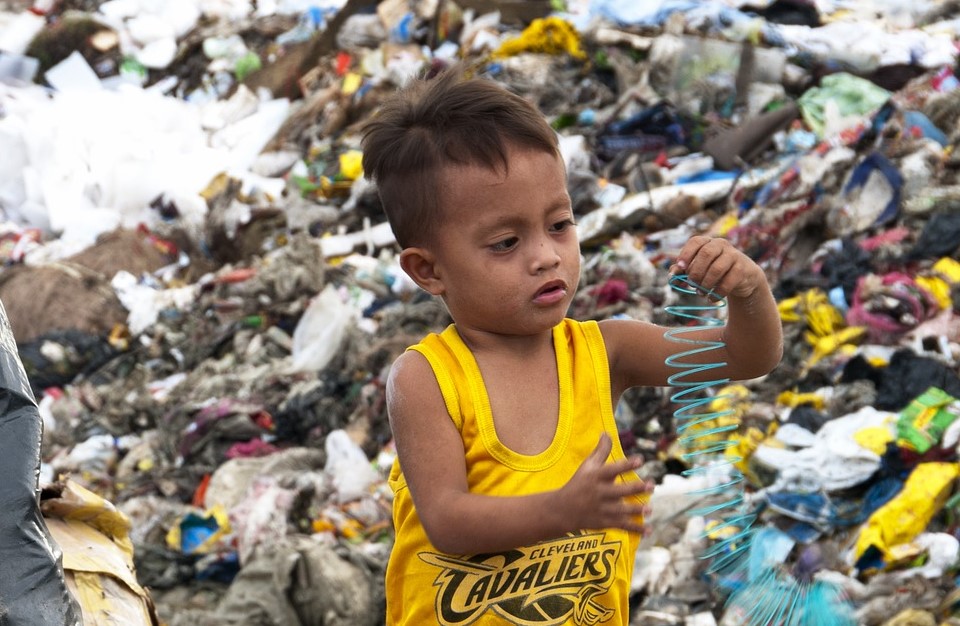BAYANA, Philippines – Hunger and lack of education appear on nearly every list of obstacles faced by the poor, disenfranchised, displaced, and underserved. It doesn’t matter where they live, hunger and lack of education are as common as the lack of clean water, sanitation. An increasing abundance of plastic waste pollution is also on many, if not all similar lists.
Villages in the Philippines and South Asia are finding success with solving hunger and education matters by placing value on plastic waste. The waste has a value determined within the community when used to acquire dietary staples and school tuitions.

Food in the Philippines
According to a report in Science magazine, the Philippines generates more than 2.7 million tons of plastic waste annually. Although the government has instituted laws intended to reduce the accumulation of solid waste, buy-in at the grassroots level is, as elsewhere, challenging to secure.
When people are preoccupied with finding food to sustain themselves and their families, reducing plastic waste ranks low on their list of priorities.
“The problem is these laws and product bans don’t work well if community members don’t understand the consequences of their actions or know why these policies were designed.”
Officials in the village of Bayanan have found a way to incentivize citizens to get involved by linking the need to reduce waste with their principle need to feed their families.
The village has placed a value on plastic waste when it is used in exchange for rice. Any villager who brings 2 kilograms of plastic waste may exchange it for 1 kilogram of rice.
While that may not account for much by our norms, a kilogram of rice is priceless because they live so far below the poverty line that this dietary staple is unaffordable. During August 2019, the plastic disposal program collected 214 kilograms of waste. Villagers obtained 107 kilograms of rice in return.
And the village streets are already getting cleaner.
Tuition in South Asia
Forbes magazine shared the story of children in a village in the Indian state of Assam. The children, from age 4 to 15, line up every week to pay their primary school tuition. Their tuition is one grocery bag filled with at least 25 pieces of plastic waste.
Before this program was initiated in 2016, the village was burning plastic waste, unaware of the health hazard that created for the community, including the school children.
In the past, many of the children’s families could not afford to pay for tuition and other necessities of life. The children generally went to work in nearby brick kilns to help with family finances. They earned the equivalent of $2.50 per day. They received no education. They were on their way to prolonging their family’s generational poverty and illiteracy.
The required amount of plastic waste is easily obtained, so the children are able pay their weekly tuition, attend school, stay out of the brick kilns, and have a hope of a better future.
The school operates its own plastic recycling plant to offset the cost of tuitions.
The best creative thinkers can solve multiple problems with a single solution. That is being proven in these villages in the Philippines and South Asia.
To read more news on Poverty on Missions Box, go here.
Sources:
- Good News Network, Philippine Village Simultaneously Cleans Up Its Streets and Feeds the Hungry By Trading Plastic for Free Rice
- Good News Network, This Clever Little School Has Been Requiring Students to Pay for Tuition With Plastic Waste Instead of Money
- Forbes, This School Replaced Tuition with Plastic Waste and the Town Was Transformed
- Science, Plastic waste inputs from land into the ocean
For more information about this, click here.




